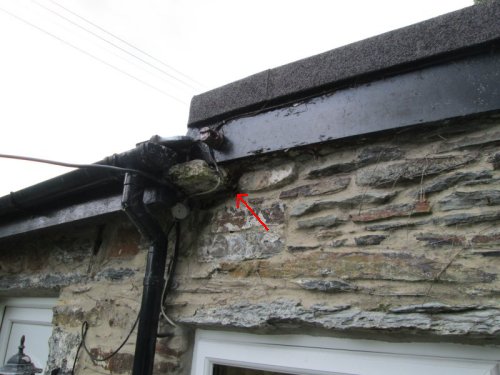
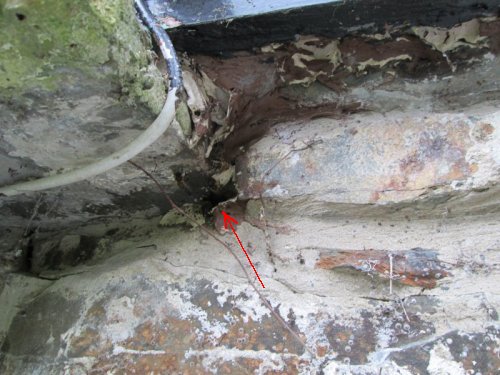
Cutout, Pentrefelin, May 2014


The bee's nest entrance area was only about 4 square centimetres.
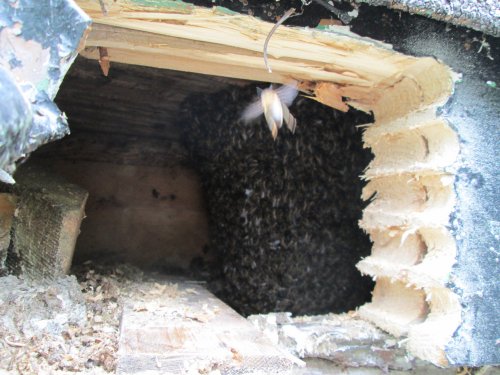
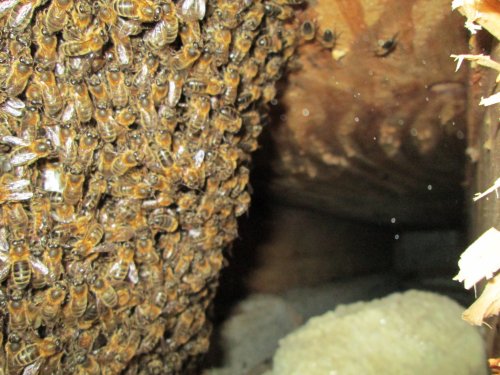
Above left: immediately behind the fascia board was a rafter
that had to be cut through.
Above right: beyond the nest can be seen the rest of the cavity, the marks on the roof of
which indicate that a huge colony once occupied it.
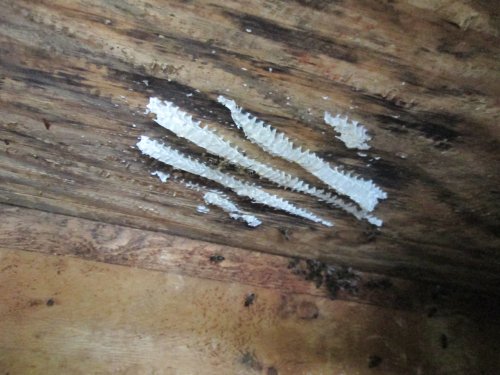
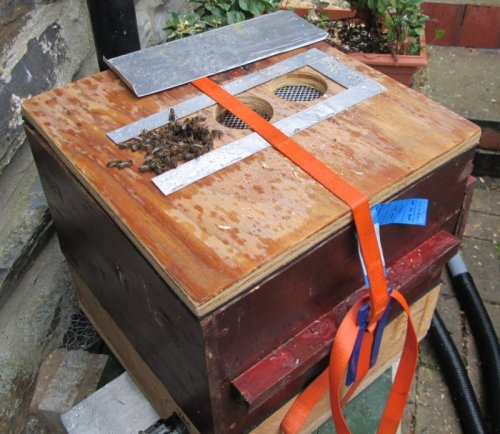
Above left: comb attachments of the removed new colony (white),
surrounded by evidence of old comb attachments.
Above right: after the main removal there were a few stragglers. On returning an hour
later they had clustered tightly on the bee vac vent suggesting that the queen was taken.
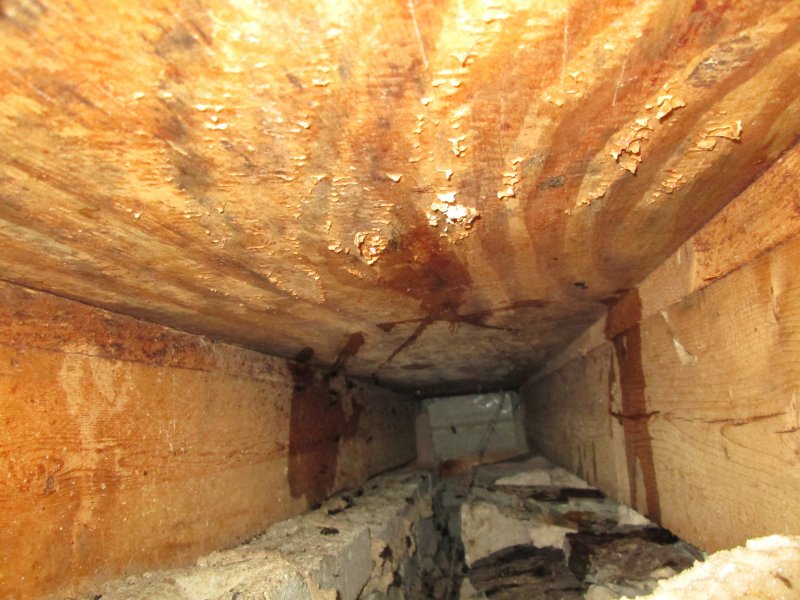
Above: the cavity beyond the nest. The roof marks indicate it was probably well filled with comb at one time. The dark stains on the roof and walls are from the Dettol used as a bee repellent.
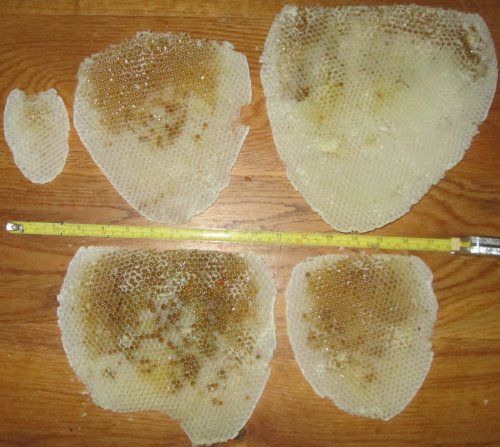
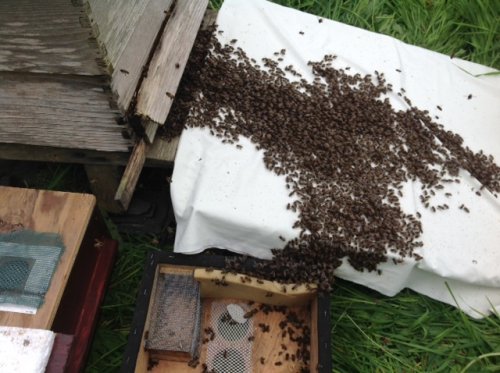
Above left: the colony's combs, constructed within the 5 days of occupancy, already well stocked with honey, pollen and eggs. The cell size at the middle of the nest was 5.3mm the average that is recorded in this area.
Above right (photo: Lis Williams): The artificial swarm created by the above cutout was given a feed overnight while a recipient was sought. The swam was hived over 20 miles from the cutout site in a WBC hive by the run-in method. The bees were a little disorientated at first but on spotting the queen and guiding her with a feather, the bees ran into the hive.